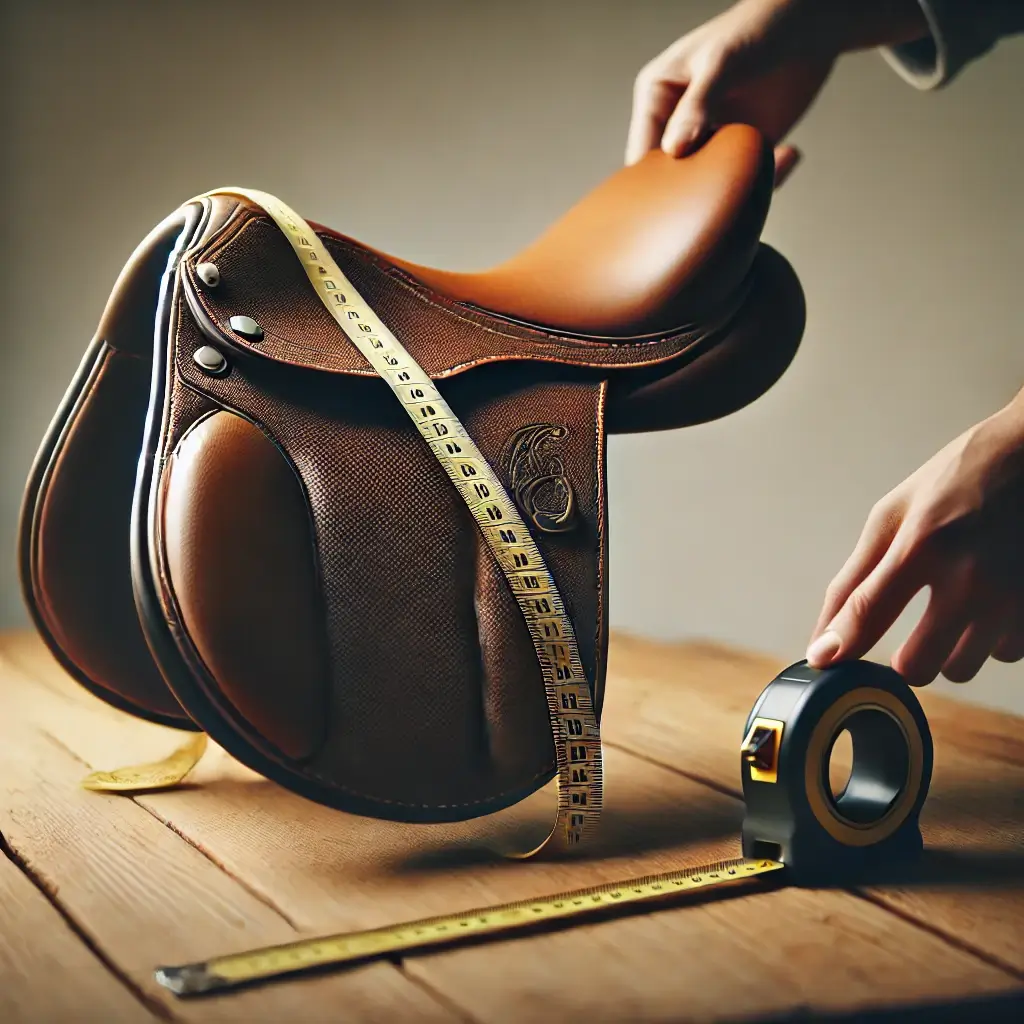A Beginner’s Guide to Measuring Saddles (2024)
When it comes to measuring a saddle, it might feel like a daunting task, especially if you’re new to it. But with the right tools—like a tape measure—and some easy instructions, you can confidently find the right size saddle for your horse or your next purchase. From my experience, the process is straightforward once broken down into easy ways.
Start by finding a secure stand for the saddle. Whether you’re dealing with used saddles or measuring new saddles, stability is key. Using a tape measure, stretch it across the saddle to check both the saddle width and the seat size. Most measurements are done in inches, but they may slightly vary when converted to centimeters. For a western saddle, follow the same steps but keep in mind that saddle measurements often depend on the design.
Understanding the saddle size and how it fits is essential not just for comfort but also for your horse’s health. Whether you’re using Saddles Direct as a guide or comparing saddle to saddle, knowing these details ensures you’ll choose the saddle for purchase that meets your needs. Follow this approach, and you’ll realize that saddle measuring is easier than you thought!
Measuring Saddle Seat Size
When it comes to ensuring comfort for both horse and rider, finding the correct seat size is crucial. Whether you’re using a tape measure or relying on other tools, understanding the basics of saddle measurement is key. Over the years, I’ve learned that measuring a saddle seat size isn’t an exact science—it depends on the brand, model, and even the tree types (like comparing apples to pears).
To get started, grab a tape and identify the centre of the cantle, which is the back of the saddle. Next, locate the head nail at the front trims or pommel (near the horn or fork, if applicable). Place the 0 mark of the tape measure at the head nail and stretch it straight to the centre of the cantle. This measurement gives you the saddle seat size, usually expressed in inches. For example, a 17″ saddle or 17.5″ saddle is common. Always measure the INSIDE of the seat and not the outside edge, as that can skew results.
Picking the suitable size is essential. A small saddle can leave the rider’s bum hanging out at the back, creating unnecessary pressure on the horse’s back. On the other hand, a large saddle may leave the rider lost without proper support, making it harder to distribute the rider’s weight evenly. For most riders, a saddle size of 17 or 17.5 inches works well, but always check against the horse’s T18 vertebrae to avoid pain or discomfort.
Measuring a saddle using a Gullet Gauge
When measuring a saddle with a gullet gauge, it’s important to understand how the gullet affects the fit. The width of the gullet is the space that lies between the tree points, which are structural components of the saddle. This distance is what allows the horse’s spine to remain free from pressure, ensuring comfort and mobility. Different types of saddles and how their trees are made can significantly impact this size.
Using a gullet gauge gives a clear picture of the distance across the points, ensuring a proper fit for the horse and rider. I remember testing my first gullet gauge and realizing how small changes in the width could change the feel on the other side of the saddle, making it either too tight or perfectly aligned for the horse’s spine. Whether for a Western or English saddle, the fit will always depend on this measurement.
How to measure the size of a saddle?
When measuring a saddle seat size, it’s simpler than it seems and requires just a tape measure and a saddle placed in front of you. Start by positioning the tape at mark 0 in the centre of the saddle badge or head nail. Then, extend the measure straight back to the centre of the cantle. This measurement in inches gives the saddle seat size, typically noted in whole or ½ units like 17 or 17.5. From my experience, ensuring the tape remains straight is key for an accurate result—sometimes, slight tilts can lead to wrong numbers. So, take your time, and soon, identifying the right fit will become second nature.
What does a 17 inch saddle mean?
A 17-inch saddle refers to the seat size, which is crucial for achieving the perfect fit and comfort when riding. Unlike an English style saddle, a stock saddle may feel and fit differently, meaning their sizes can’t always be directly compared. As a rider, I’ve noticed that even a difference of 1 inch—whether it’s 16″, 16.5″, or 17″—can significantly affect your balance and control. For instance, a 17″ stock saddle typically suits a medium-sized rider, as it’s within the range of 42 cm to 43 cm. This distinction is particularly helpful when following a rough guideline for choosing saddle sizes. It’s worth considering how these measurements—like 40 cm, 16.5″, or even a 44 cm size—impact not just fit but also riding performance.
How do you measure a bike saddle size?
When it comes to choosing the right bike saddle, getting the size right is essential for comfort and performance. To measure a bike saddle size, you need to focus on the distance between your sit bones. For smaller riders, the distance between sit bones could range from 70 mm to 100 mm, which corresponds to saddles around 130 mm. As you move to medium-sized riders, the distance between sit bones increases to 100 mm to 130 mm, and typically, saddles of about 143 mm are a good fit. For larger riders, the distance between sit bones may range from 130 mm to 160 mm, requiring saddles that are 150 mm or more in width. Choosing the right saddle ensures that your ride is comfortable and that you’re getting the support you need for your riding style. By knowing your sit bones measurement, you can confidently pick a saddle that fits well and prevents discomfort during long rides.





